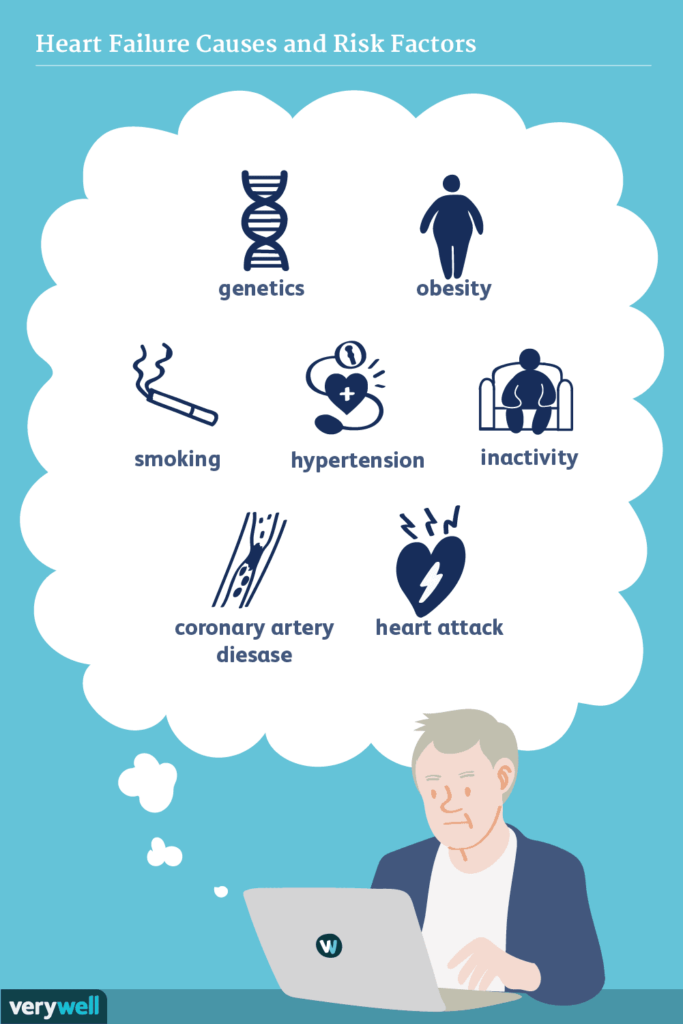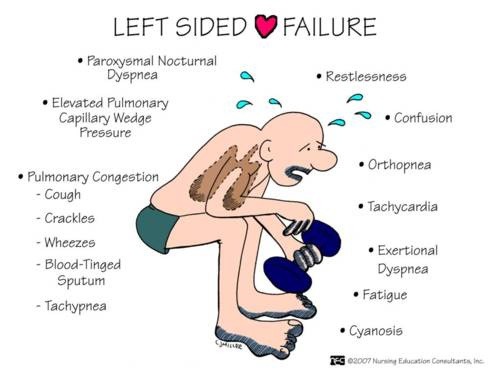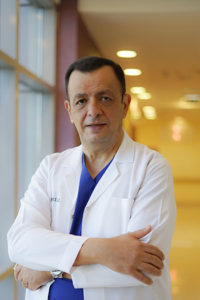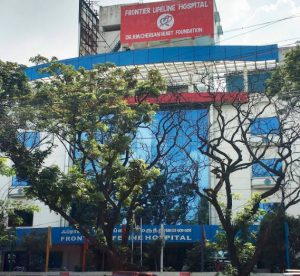Left Sided Heart Failure Symptoms
Left sided heart failure is a condition where the left side of the heart does not function properly. It occurs when the ventricle on the left side of the heart is weakened to the point that its contractions are not adequate anymore to circulate the blood around the body. When this happens, the heart generally has to work harder to compensate for the weakness. Read More
Top Doctors For Left Sided Heart Failure Symptoms Treatments
Top Hospitals For Left Sided Heart Failure Symptoms Treatments
Left Sided Heart Failure Symptoms
Table of contents
- What causes left sided heart failure?
- What are the risk factors of left sided heart failure?
- What are the symptoms of left sided heart failure?
- What are the complications of left sided heart failure?
- How is left sided heart failure diagnosed?
- What is the treatment for left sided heart failure?
- Is there any way of preventing left sided heart failure?
Left sided heart failure is a condition where the left side of the heart does not function properly. It occurs when the ventricle on the left side of the heart is weakened to the point that its contractions are not adequate anymore to circulate the blood around the body. When this happens, the heart generally has to work harder to compensate for the weakness. There are two types of left-sided heart failure that exists, they include:
- Systolic heart failure – also referred to as heart failure with reduced ejection fraction, occurs when the left ventricle grows too weak and does not contract hard enough to circulate blood throughout the body. This results in the left ventricle pumping harder to compensate, leading to it growing even weaker and thinner. Systolic heart failure leads to backward blood flow into organs, causing fluid build-up in the lungs and other parts of the body.
- Diastolic heart failure – this occurs when the left ventricle becomes stiff and thick and is unable to fill with blood properly, this reduces the amount of blood pumped out into the body. This causes blood to build up in the left atrium over time and then subsequently in the lungs leading to fluid congestion and heart failure symptoms.
What causes left sided heart failure?
Underlying health conditions can cause left sided heart failure. Heart-related issues most commonly cause it, some of which include:
- Coronary artery disease
- Heart attack
- Heart valve diseases
- High blood pressure
Left sided heart failure may also be caused by lifestyle-related issues like:
- Heavy alcohol use
- Obesity
- Cocaine use
- Diabetes
- Sleep apnea.
What are the risk factors of left sided heart failure?

Some of the risk factors of left sided heart failure include:
- Age – men that are between the ages of 50-75 often experience the symptoms of left sided heart failure, especially if they have previously had a heart attack.
- Gender – men are more at risk of developing left sided heart failure.
- Race – African-American men are more at risk of developing left sided heart failure.
- Heart diseases and defects – the presence of heart diseases like aortic stenosis, congenital heart defects, cardiomyopathy, myocarditis, arrhythmias, previous heart attack, valvular heart disease, constriction of the pericardium, etc., in an individual greatly increases their risk of developing left-sided heart failure.
- Medication – some drugs which are used in the treatment of diabetes and in chemotherapy have been found to increase the risk of left sided heart failure.
- Chronic diseases – some chronic diseases like HIV, diabetes, hypoproteinemia, etc., can also increase the risk of left sided heart failure.
What are the symptoms of left sided heart failure?

The signs and symptoms may be unnoticed at first but will usually worsen over time. It is important to see a healthcare provider early on to notice some of the symptoms. The condition leads to serious complications when it is left unmanaged or untreated. Some of the symptoms that may be observed include:
- Fatigue
- Shortness of breath
- Chronic coughing or wheezing
- Fluid retention, causing edema in the extremities
- Rapid and irregular heartbeat
- Lack of appetite and nausea
- Difficulty in concentration
The heart usually tries to compensate by pumping harder, and this results in further damage, including:
- Enlarged heart
- High blood pressure
- Less blood flow to the arms and legs
- Rapid heart rate
What are the complications of left sided heart failure?
Some of the complications of left sided heart failure can include the following:
- Heart valve diseases.
- Liver disease.
- Right-sided heart failure.
- Anemia.
- Kidney disease.
- Abnormal heart rhythm.
- Weakness and fatigue.
- Sleep apnea.
How is left sided heart failure diagnosed?
This condition is diagnosed by obtaining a thorough medical history and lifestyle habits of an individual. Doctors also perform a physical examination along with some laboratory testing and diagnostic imaging. Laboratory tests that can be used to diagnose left sided heart failure include:
- Blood tests – they can be used to check for abnormal hormones resulting from pressure changes in the heart.
- Metabolic panel tests – this checks the electrolyte levels in the body and the kidney and liver function.
Some diagnostic imaging tests that can be done include:
- Electrocardiogram – this records and monitors the heart’s electrical activity.
- Echocardiogram – this shows the heart movement and blood flow
- Cardiac MRI – this provides a high-definition image of the heart.
- Coronary angiography – this examines the heart’s blood vessels.
What is the treatment for left sided heart failure?
Many treatment options exist for left-sided heart failure. The ones that are recommended for an individual are dependent on the type of left-sided heart failure that the individual is suffering from. The treatment often includes medications that improve the functioning of the heart, some of which include:
- Digoxin
- Diuretics
- Beta-blockers
- Aldosterone antergonists
- Sodium-glucose transport protein 2
- ACE inhibitors
Some procedures are also used, especially when the symptoms do not improve with medication and the condition worsens. They include:
- Electrical cardioversion – this is the electrical resetting of the heart’s rhythm.
- Cardiac resynchronization therapy – this is where an electrical device that uses a gentle current to stimulate the heart’s contraction is implanted into the patient. The device can also be called a biventricular pacemaker.
- Heart transplant – this procedure aims to replace a tired and worn-out heart with a healthy one from a donor.
- Left ventricular assist device – this is an implantable device that helps the heart to circulate blood.
- Implantable cardioverter defibrillator – this device detects heart arrhythmias and then sends a gentle electrical current to restore a normal heart rhythm.
Is there any way of preventing left sided heart failure?
A healthy lifestyle greatly reduces the risk of the development of left sided heart failure. Individuals already experiencing the condition can greatly improve their situation by adopting healthy habits, which can greatly help them avoid future issues. Some ways of preventing left sided heart failure include:
- Making time for regular exercises and physical activities.
- Stopping alcohol abuse and smoking habit.
- Managing conditions of high blood pressure or underlying coronary disease.
- Maintaining a healthy weight and eating nutritious, healthy meals.
- Reducing stress and managing stressful conditions better.
“Medical Advice Disclaimer:
DISCLAIMER: THIS SITE DOES NOT PROVIDE MEDICAL ADVICE OR OPINION:
The information provided in this article or website by way of text, illustration, graphics, Images or any other form in this article or website is provided for informational purposes only. No information or material provided on this site is meant to be a substitute for a professional medical advice. Please refer to your family doctor or specialist in that field for any medical condition, diagnosis and treatment. Do not delay in contacting a professional on account of something you have read in this article or on this website.”



























































































































